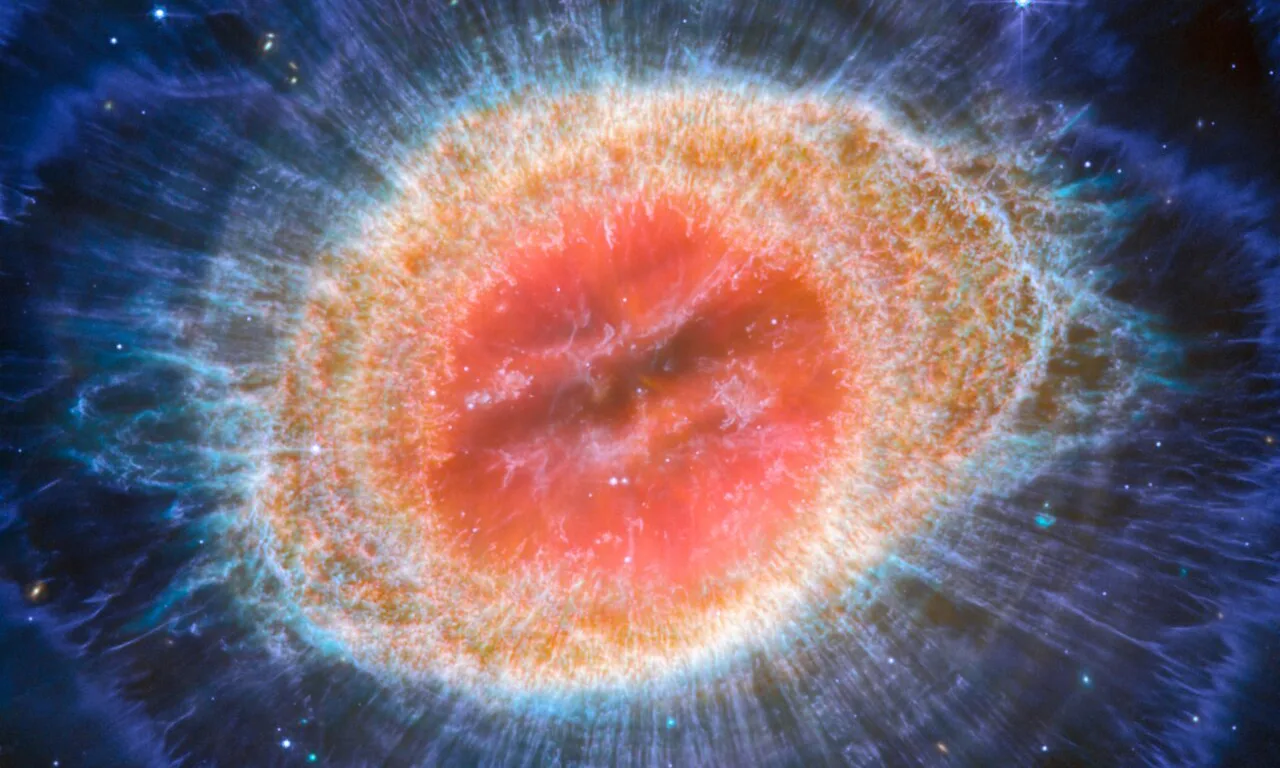Webb Space Telescope captures the Ring Nebula in mesmerizing detail
The James Webb Space Telescope (JWST) captured extraordinarily detailed images published today of the Ring Nebula. The gaseous cloud, also called M57 and NGC 6720, contains 20,000 dense globules rich in molecular hydrogen. It sits about 2,500 light years away from Earth.
The first image (above) was taken with the NIRCam (Near InfraRed Camera), one of the Webb Space Telescope’s primary sensors. It is designed to detect light in the near-infrared spectrum and can capture remarkably detailed images. NIRCam also took the equally hypnotizing updated image of the Pillars of Creation.
Meanwhile, the second image (below) was captured using the JWST’s MIRI (Mid-InfraRed Instrument). It better highlights the nebula’s (roughly) ten concentric arcs beyond its outer edge, likely formed from its central star’s interaction with a lower-mass companion in its orbit. “In this way, nebulae like the Ring Nebula reveal a kind of astronomical archaeology, as astronomers study the nebula to learn about the star that created it,” the European Space Agency wrote in a press release.

The Ring Nebula was discovered somewhat serendipitously in 1779 by French astronomers Charles Messier and Antoine Darquier de Pellepoix while they searched for comets. It’s a planetary nebula, named as such because early researchers mistook their appearances for distant worlds. The Ring Nebula formed from a medium-sized star that shed its outer layers as it exhausted its fuel and approached its demise.

Subscribe to the Engadget Deals Newsletter
Great deals on consumer electronics delivered straight to your inbox, curated by Engadget’s editorial team. See latest

Please enter a valid email address
Please select a newsletter
By subscribing, you are agreeing to Engadget’s Terms and Privacy Policy.
“The colourful main ring is composed of gas thrown off by a dying star at the centre of the nebula,” the ESA wrote. “This star is on its way to becoming a white dwarf — a very small, dense, and hot body that is the final evolutionary stage for a star like the Sun.”
